Xuron Corp. | 410A: Ultra Flush Cutting Shear
Reviewed by Kevin Futter
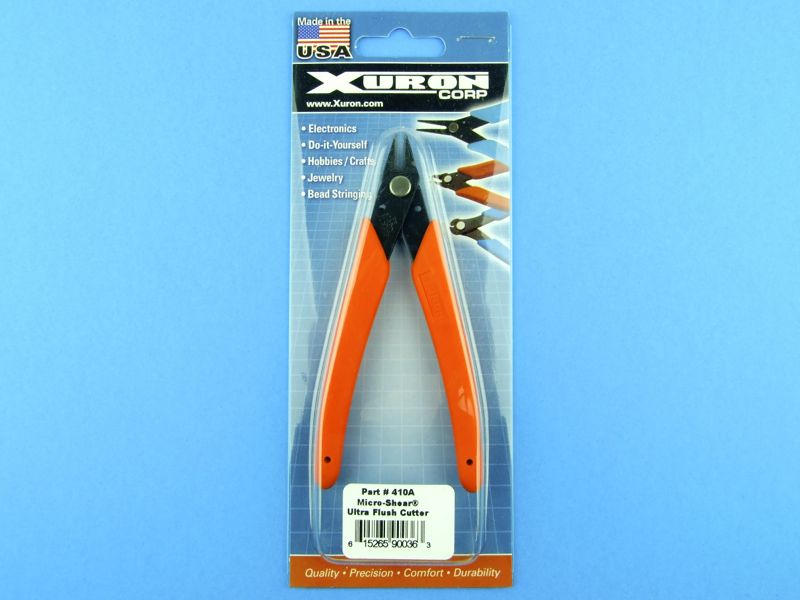
US-based Xuron Corp. is a well-known maker of hand tools for modellers and hobbyists, with an extensive range of shears and cutters for every conceivable use case. Here we take a look at the company's 410A Ultra Flush Cutting Shear. This tool is described in Xuron's product catalogue like so:
The full flush cutting version of our Model 410, the Model 410A should be used for cutting plastic and other soft materials. Our Micro-Shear® blade bypass cutting method leaves flat, clean cuts requiring little or no post cut clean up. While the Model 410A can be used to cut wire, this should be very soft wire no larger than 20 AWG, (0.8mm)
Being able to flush-cut sprue attachments from kit parts is something of a Holy Grail for plastic modellers. Many tools have promised this, but few have delivered. Most of us don't even bother trying, simply cutting the sprue back from the part, and cleaning up the resultant bur or nub with other tools. So I was intrigued by Xuron's claims for these cutters, and decided to put them to the test.
The tool itself is very well made, with very short tines that taper to a fine point. One side is flat to enable flush cutting, while the other side is wedge-shape to form the cutting edge:
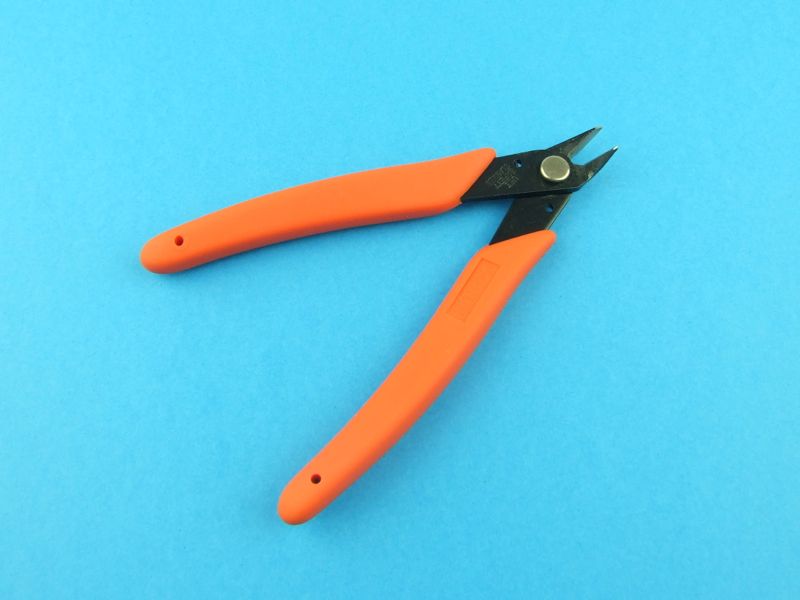
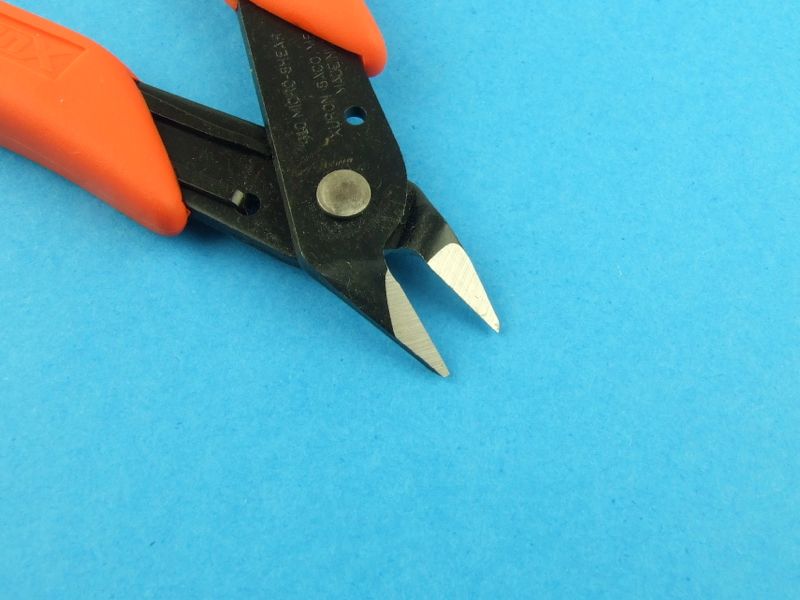
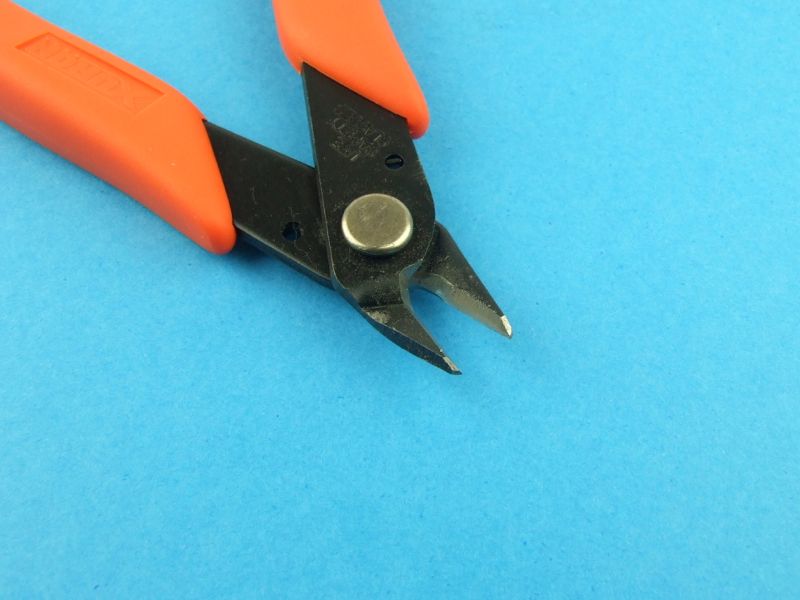
My go-to sprue cutters at the moment are the black-handled ones from Tamiya, so I thought it would be interesting to perform an A/B test, comparing the Xuron and Tamiya tools:
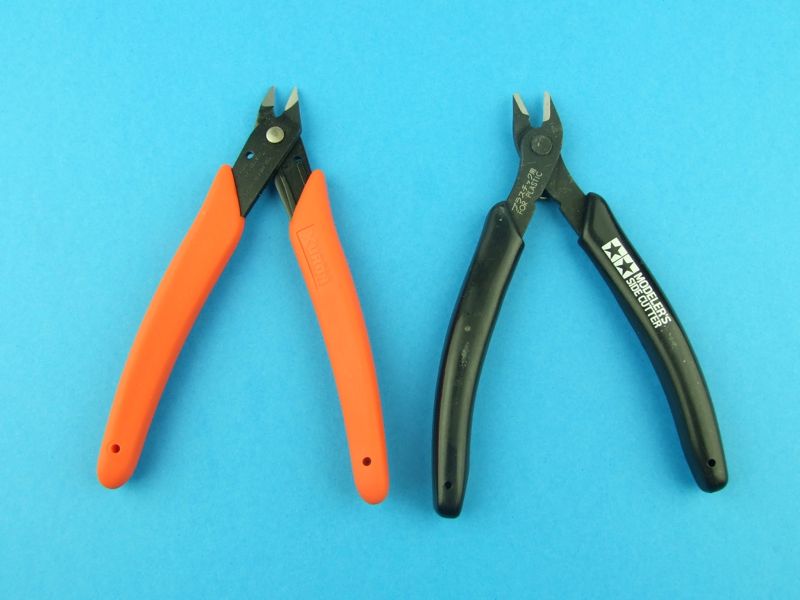
They are roughly the same size, but the Xuron cutters have a stiffer action. I found both tools quite comfortable to use, though the Xuron set allowed for more force to be applied, which may be useful for thicker sprue gates. My test subject was the wing from Trumpeter's 1/32 F4U-1 kit:
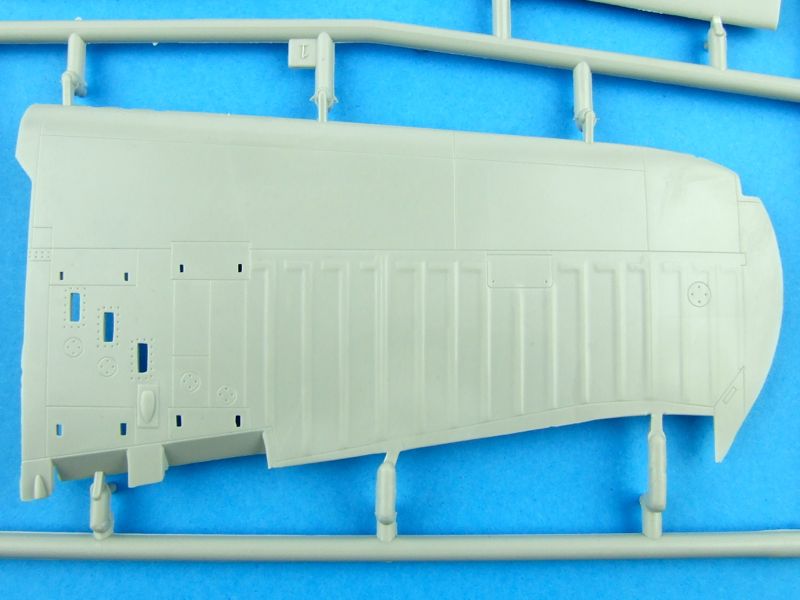
I didn't want to dwell on the Tamiya cutters for this review, so I only snipped a single sprue attachment point using them, just for the sake of comparison:
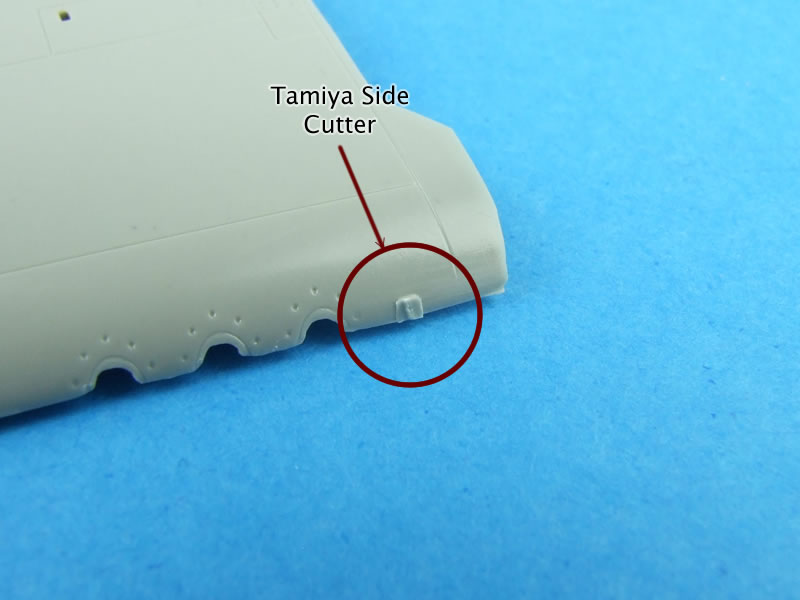
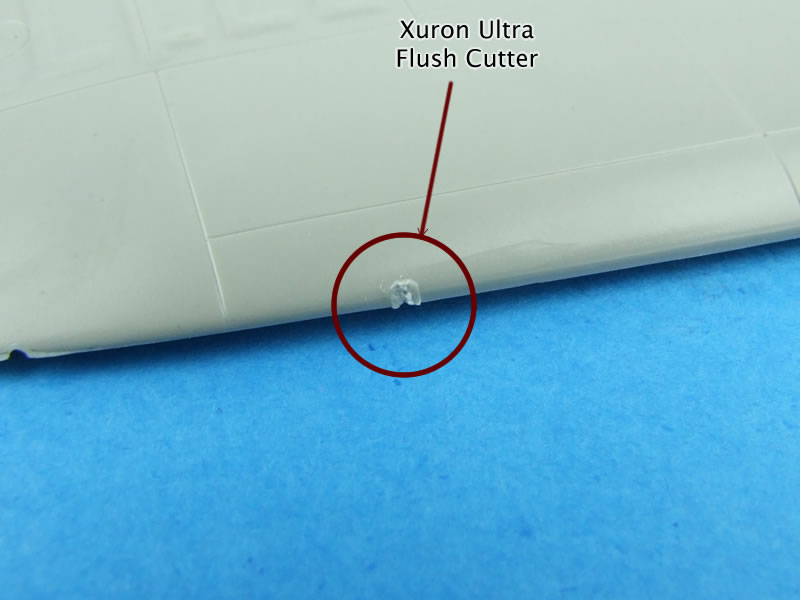
No sprue cutter was ever going to be able to produce a flush cut on a curved surface such as this wing leading edge, so in each case there's some residual plastic to clean up. The cut made by Xuron tool is clearly more flush however, but surprisingly, it also caused some compression damage to the part itself. This will need to be repaired during assembly.
Since flush cutting really assumes a flush surface, I decided to try the Xuron cutters on the trailing edge of the part, where the attachments points are ostensibly at 90°. Here's the result in the aileron cut-out:
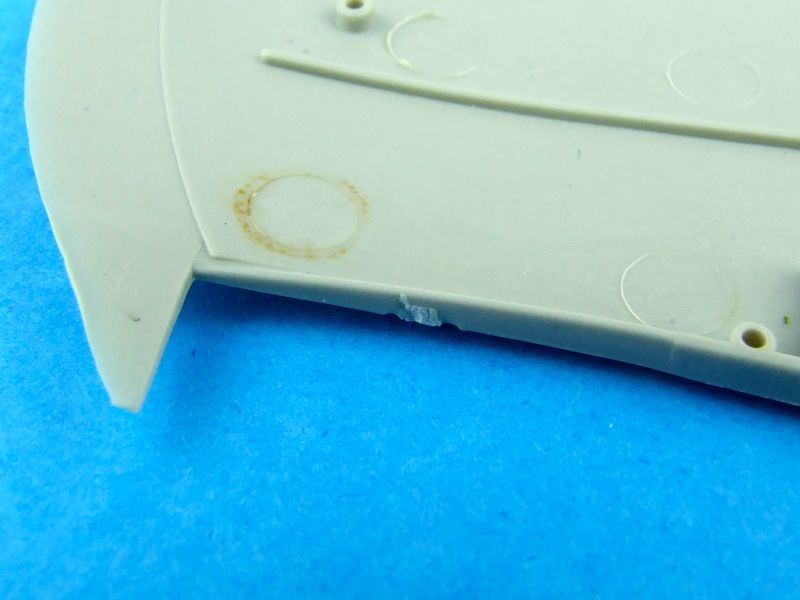
As you can see, a much cleaner result. It's hard to tell whether the two divots either side of the cut were caused by the tool, or are in fact moulding defects. To take the test one step further, I took the tool to one of the trailing edge attachment points that meets the part on an angle. First, I cut the part free with a 90° cut:
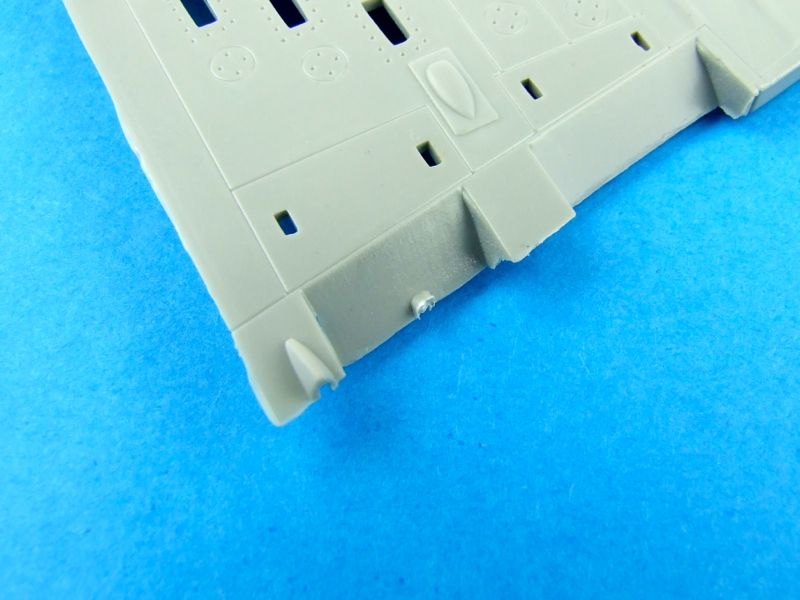
Then, holding it flat against the angled surface of the part, I attempted to removing the remaining attachment stub as cleanly as possible:
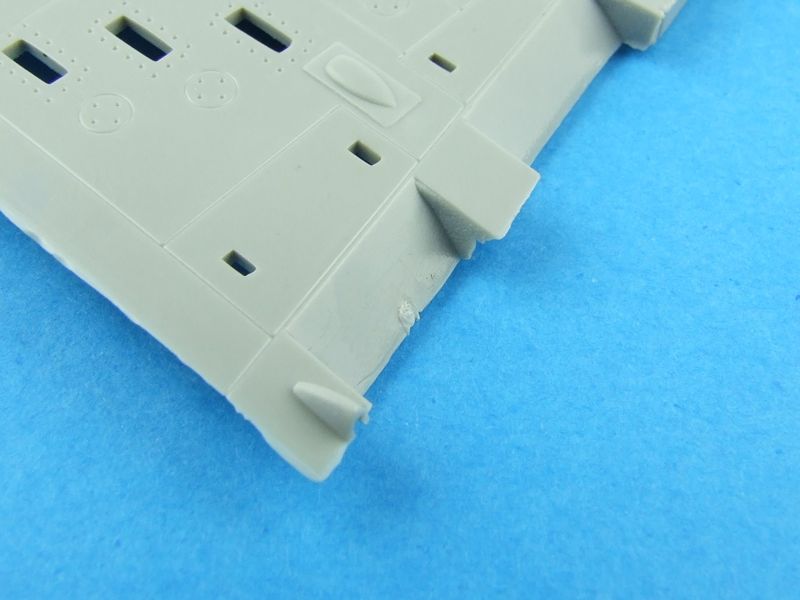
That's a pretty good result, but not 100% flush, and further clean up will still be required. The exact result you achieve with a flush cut is partly dependent on the nature and qualities of the plastic used in the kit, with some being soft and spongy, and others hard and brittle. Each type will respond differently to being cut, so the results of my testing can only be seen as no more than generally indicative. Unfortunately time precludes a more comprehensive testing regime, but I'd certainly like to hear from modellers who have used these cutters on other manufacturers' plastic.
Conclusion
The flush-cutting performance of these Xuron sprue cutters is acceptable if used with care, but certainly not perfect or 100% reliable. There's no doubting, however, that these Xuron cutters are a quality tool with no compromises, and perform well as general-purpose sprue cutters. I remain unconvinced by the efficacy of the flush-cut approach, no matter whose tool is used, but I have no hesitation in recommending these cutters should you need a quality sprue cutter.
Thanks to Xuron Corp. for the review sample.
© Kevin Futter 2015
This review was published on Friday, January 16 2015; Last modified on Friday, January 16 2015
